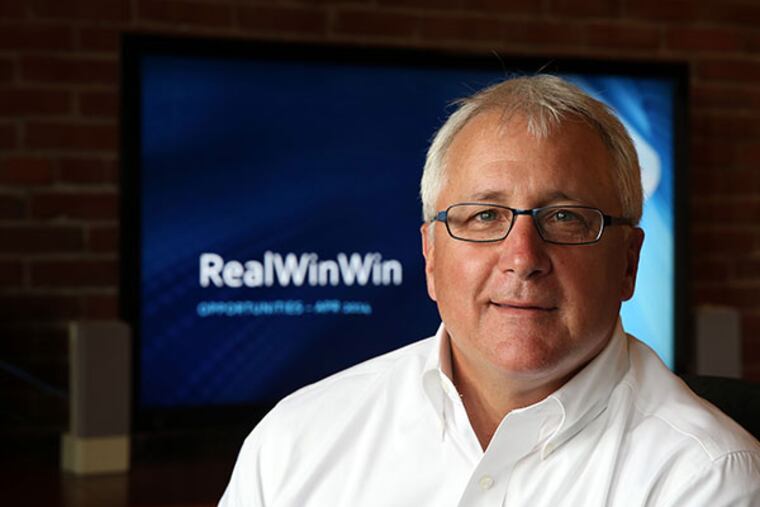Making energy efficiency more cost-effective
Center City firm helps commercial clients capture rebates and incentives.

DOUG BLOOM, 56, of Flourtown, is CEO of RealWinWin, a company that makes energy efficiency economically viable for clients who own, operate or manage more than 1 billion square feet of commercial space. The company finds, collects and creates rebates to make energy-related projects more cost-effective. Q: How'd you come up with the idea for RealWinWin?
A: The company was founded in 2001 to build an ASP [application service provider] in the landlord-tenant, building and energy-efficiency spaces. In 2003 it pioneered rebate administration, a service to collect energy-efficiency rebates and incentives. At the time, about half the states had approved electric utilities to promote energy conservation by establishing programs to rebate customers who installed energy-efficient systems.
Q: Startup money?
A: There were early investments, but we subsequently raised several million dollars. We got money from Ben Franklin Technology Partners, venture funds and private investors.
Q: Value proposition?
A: We have clients with big national footprints. Walgreens, 7-Eleven, Starbucks, J.C. Penney, Kohl's and Toys "R" Us are some. They're upgrading lighting and other energy systems. They know rebates are available but realize one or two people in a central office won't be able to handle that. You can get 20 to 30 percent back on project costs by capturing these rebates.
Q: The biz model?
A: We have a minimum fee of $250 per rebate, but generally we get 20 to 25 percent of the total rebate. The average rebate ranges from $1,000 to $4,000.
Q: With whom do you compete, and what differentiates you?
A: When we started, we were the only game in town. Over time, lighting contractors and equipment installers have begun to capture rebates as a service differentiator so they can win the job. We're comprehensive and capture rebates on everything a company is doing, whereas a lighting contractor focuses only on lighting rebates.
Q: How big a biz is this?
A: We did about $2 million in gross revenue last year and have 20 employees.
Q: Biggest challenge?
A: Competition from energy-service providers and lighting vendors to capture rebates. Discounted proposals are hard to offset when the decision is made by corporate purchasing departments focused solely on price.
Q: What's next?
A: We want to be the perfect outsourced rebate department. So we talk to HVAC manufacturers we know and work with lighting vendors and contractors. We can add rebate capture to their portfolio and help them become energy efficient.
Online: ph.ly/YourBusiness